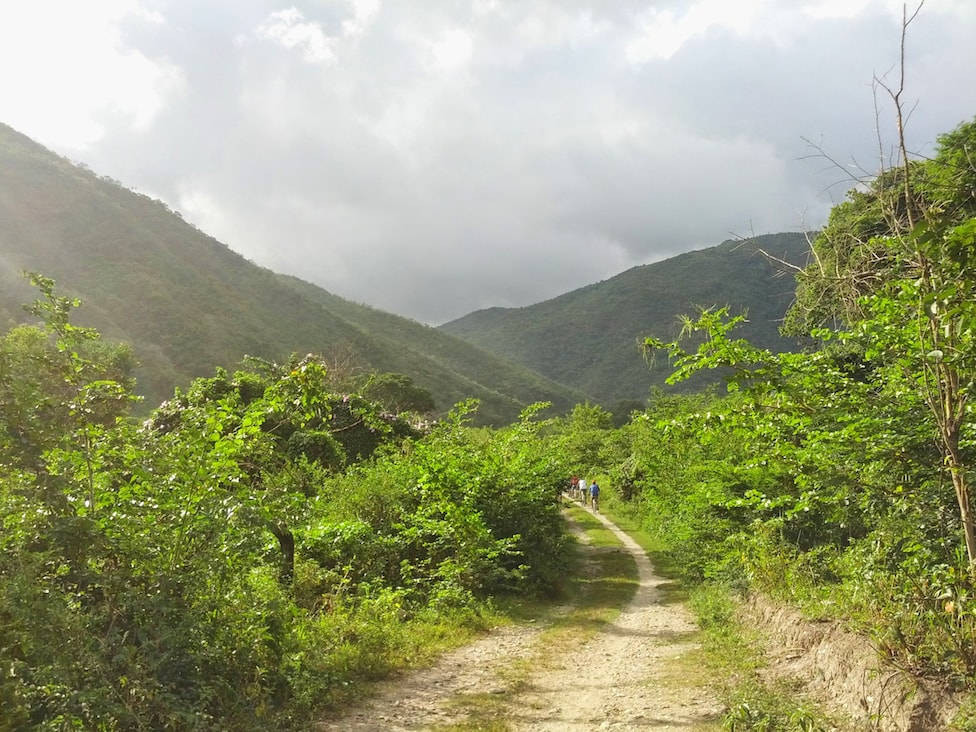My interest in networking began during my time as a professor and head of the telecommunications lab at the University of Los Andes, in Merída, Venezuela, where we began experimenting with computer networks. I was one of the earliest Internet enthusiasts at our university. Our university was the first in Venezuela to get direct access to the Internet backbone in Homestead, Florida, by means of an antenna on the roof of our lab with the satellite modem in my office.
When I’m not working as a professor, though, I love to explore the outdoors. I started wondering, What would it take for me to live in a remote village, instead of living in the city? The answer was simple: I would just need a way to communicate in order to handle emergencies and to get in touch with people. That is how I began trying to bring connectivity to remote villages, places that, at the time, didn’t have telephones or any kind of communication whatsoever.
I’m a HAM Radio enthusiast, so at the time, I was exploring packet radio as a way to provide connectivity. This was still a new technology that allowed you to send data and programs. We used it to build our first network in rural areas surrounding the city of Merida, but there were restrictions since only registered amateurs could legally use it. So, when the ISM frequency bands were made freely available in Venezuela, we bought some spread-spectrum wireless cards, which were meant for local area connectivity. By replacing the stock antennas with home-built Yagi antennas, we were able to cover the same distances we had with packet radio, but at much higher speeds. We were able to connect health and community centers around Merída, and eventually we were able to connect locations all over the state.
That’s how it started…
We had a problem, though. While we were putting together these networks, we didn’t have the manpower to maintain them. There were only four of us. That’s why we started EsLaRed (Escuela Latinoamericana de Redes – Latin American Networking School) – to build that capacity. At the time, I was on sabbatical from the university and my colleagues suggested I spend part of it at the International Centre for Theoretical Physics (ICTP) in Italy — where they were organizing the Second Computer Networking School. I did it. I went to ICTP and once I was there I convinced some of the instructors to come to Merída. That is how we held our first networking school at the end of 1992. We had participants from ten (10) Latin American countries at that meeting. And – as they say – the rest is history. Today EslaRed is a key training event in the LAC region and will celebrate its 25th anniversary in November at a training event in San Salvador.
Back to Community Networks…
We focused on how to extend Internet coverage with wireless over longer and longer distances to connect remote areas. The first 70 kilometer link was to the village of Canagua. The important thing when you’re sending a signal over a long distance is to have a high enough placement to “clear” the line of sight. We were lucky because there is a big mountain just outside of Merída that is easily accessible from the city by cable car. So, we were able to leverage this spot to reach Canagua, while we were also connecting several sites in the city and the surrounding community. And from there, we just kept looking into how to expand the range further and further at a lower cost.
In 2006, we made a link that went 280 kilometers. One end of the network was 4,200 meters and the other end of the network was a hill about 250 meters high, with flatlands between them. This worked as we were able to clear the curvature of the earth. We used repurposed satellite antennas that were 2.9 and 2.4 meters in diameter. The throughput was pretty low, but we did manage to send video. In 2007, we broke the world record for the longest transmission of a WiFi signal, 382 kilometers, at a throughput of 4 Mbps, which has not yet been surpassed.
Getting a signal to these places is incredibly important. The telecommunications network in Venezuela is not yet great. I live only five kilometers outside of the city and there’s still no wireline telephone service there. While most cities are connected by fiber optics, in rural areas only wireless service is available, and many villages are not covered at all. By providing Internet coverage with modified WiFi technology, people can also talk to each other using VoIP. This makes a huge difference in their lives.
